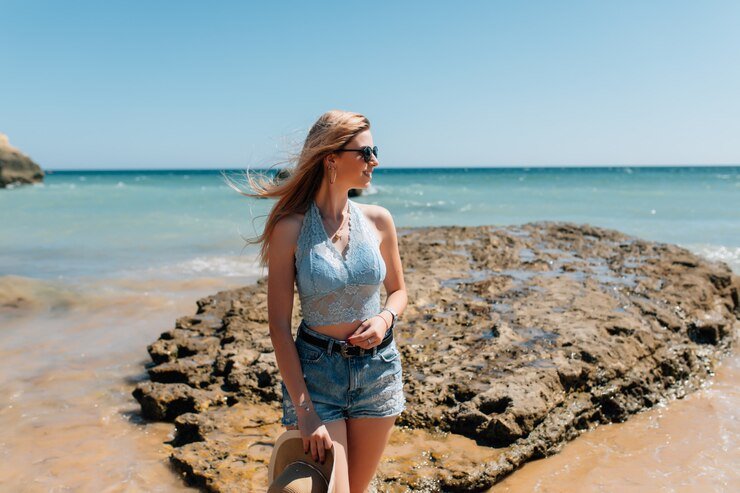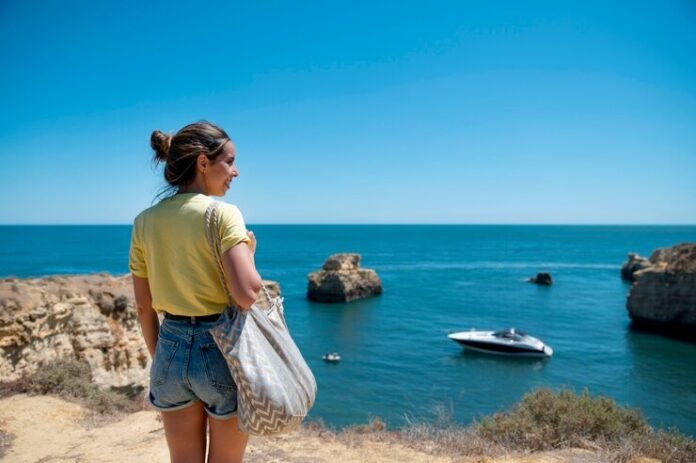In a world where accessibility in public spaces remains a challenge for many, Marilena Carulli’s Blind Beach in Italy stands as a shining example of inclusivity, innovation, and the power of determined vision. Located on the Adriatic coast, this unique beach was designed with the specific aim of making the beach experience accessible to visually impaired individuals, as well as those with other disabilities. Through the thoughtful design and innovative solutions implemented at Blind Beach, Carulli has not only addressed the barriers many face in enjoying coastal environments but also set a new standard for inclusive tourism worldwide.
The Inspiration Behind Blind Beach
The creation of Blind Beach began with a deeply personal journey for Marilena Carulli. While working as a volunteer at a center for the visually impaired, Carulli met a woman who expressed her desire to experience the beach in the same way that sighted people could—feeling the waves, walking barefoot on the sand, and hearing the ocean sounds without the anxiety of not knowing her surroundings. This encounter inspired Carulli to consider the possibilities of creating a beach where sensory experiences were accessible to all, including those who could not rely on sight.
This spark led to years of research, consultations, and planning. Carulli collaborated with experts in accessibility, environmental design, and coastal management to craft her vision of Blind Beach, ensuring the project was environmentally sustainable while addressing the specific needs of disabled visitors. Her mission was to create a space where everyone, regardless of physical ability, could enjoy the beach to the fullest.
Designing a Sensory Paradise
At the heart of Blind Beach’s success is its innovative approach to accessibility. The beach has been designed with a variety of features to ensure that people with visual impairments can navigate and enjoy the environment independently. These features include tactile paths that guide visitors to different areas of the beach, audio beacons that provide orientation cues, and Braille information boards offering detailed descriptions of the beach’s layout, safety information, and even local wildlife. These tactile and auditory guides ensure that the beach is navigable without requiring constant assistance from staff, giving visitors a sense of autonomy and freedom.
Other sensory features contribute to a unique beach experience. For example, scented gardens filled with aromatic plants native to the region provide a sensory delight and a method of orientation. In the water, safe swimming areas are roped off and temperature-monitored, allowing visually impaired visitors to swim safely and confidently. These thoughtful design elements focus on engaging all the senses, emphasizing that beach experiences go beyond what one can see.
A Community-Driven Experience
Beyond the physical modifications, Blind Beach fosters a deep sense of community among its visitors. Carulli emphasizes creating a welcoming environment for people of all abilities, encouraging interaction between sighted and visually impaired visitors. Events at the beach are designed to be inclusive, from guided sensory walks and beach yoga sessions to accessible water sports like tandem kayaking. Carulli’s goal is to create not just an accessible beach, but a space where individuals from different walks of life can share experiences and connect on a deeper level.
Moreover, visitors are encouraged to learn about marine life and environmental sustainability, making the experience both educational and enriching. Interactive workshops and moonlit concerts bring people together, further promoting the sense of community and inclusion that is central to Blind Beach’s mission.
Environmental Sustainability
In addition to prioritizing accessibility, Carulli was adamant about preserving the natural beauty and ecological integrity of the beach. Sustainable materials were used in the construction of the beach’s infrastructure, and the team worked closely with environmental experts to ensure that all accessibility modifications would have minimal impact on the surrounding ecosystem. Waste management protocols are strict, and educational programs about marine conservation aim to foster a sense of environmental responsibility among visitors. This commitment to sustainability sets Blind Beach apart as a model of eco-friendly and inclusive tourism.

Recognition and Global Impact
Since its creation, Blind Beach has been hailed as a groundbreaking achievement in the tourism industry. The project has earned numerous awards, including the European Accessibility Award for Innovation in Tourism and Italy’s Sustainable Tourism Excellence Prize. These accolades have not only brought attention to the importance of accessible tourism but have also encouraged other regions to consider similar models for making public spaces more inclusive.
Carulli’s work with Blind Beach has sparked a global conversation about the potential of inclusive tourism to transform lives. Many visitors have shared their experiences, expressing how the beach has allowed them to engage with nature in ways they never thought possible. For visually impaired individuals, Blind Beach offers a sense of freedom and independence that is often hard to find in outdoor recreational spaces. For sighted visitors, it provides an eye-opening experience that fosters greater empathy and understanding of the challenges faced by those with disabilities.
The Future of Blind Beach and Inclusive Tourism
As the success of Blind Beach continues to grow, so does interest in replicating its model in other parts of Italy and around the world. Carulli and her team are working on expanding the project’s offerings, including creating an accessible nature trail and developing overnight accommodations that cater to visitors with disabilities. Plans are also underway to produce a guidebook to help other communities establish their own accessible beach projects.
Carulli’s advocacy for inclusive tourism doesn’t stop at Blind Beach. She frequently speaks at conferences and advises tourism boards globally, sharing her insights and expertise. Her hope is that the success of Blind Beach will inspire a shift towards more inclusive public spaces, ensuring that everyone, regardless of ability, can enjoy the world’s natural wonders.
Conclusion: A Model for the Future
Marilena Carulli’s Blind Beach is much more than a picturesque coastal destination; it is a testament to the power of inclusivity, innovation, and determination. Through her vision, Carulli has created a space where all individuals can experience the beauty and serenity of the beach, regardless of their physical abilities. Her work serves as a powerful reminder of the importance of accessible tourism and sets a new standard for what is possible when we prioritize inclusivity and environmental sustainability.
In a world that often overlooks the needs of those with disabilities, Blind Beach is a beacon of hope, proving that with the right vision and dedication, we can create spaces where everyone belongs.



